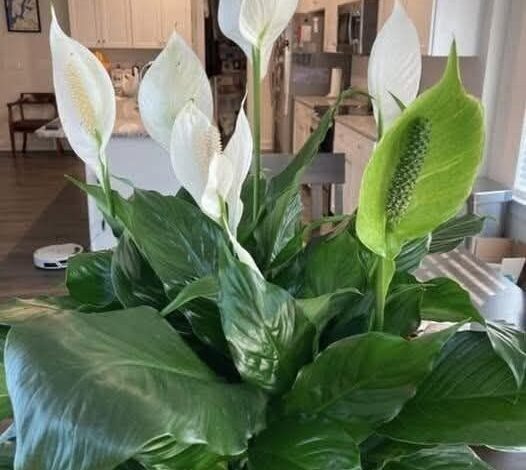
How To Get Your Peace Lily To Flower More!
A peace lily that refuses to bloom isn’t scolding you—it’s communicating. These plants don’t throw tantrums; they whisper. A drooping leaf, a stubbornly green stem where you expected a white bloom, soil that dries too quickly or never quite dries at all… every detail is a clue. When you learn to read them, the whole plant becomes easier to understand.
Most people assume flowering is automatic, something the plant should do on its own. But blooming takes energy. Real energy. And a peace lily won’t waste strength on flowers if the basics aren’t in place. It focuses on survival first, beauty second. Once you see it that way, the process becomes almost simple: give the plant what it needs, consistently, and it will reward you without hesitation.
Start with light. Peace lilies are tolerant—almost too tolerant. They’ll live in dim corners, shadowy hallways, or offices with overhead fluorescents. They just won’t bloom there. If the plant isn’t getting enough light to fuel its natural cycle, it won’t have the resources to push out flowers. What it needs is gentle, indirect light—bright enough to energize it, soft enough not to scorch it. Place it near a window with filtered sunlight and watch how it responds over the next few weeks. Its leaves will lift, deepen in color, and look more alive. That’s the first sign it’s charging up.
Then there’s water. Peace lilies are drama queens when they’re thirsty—drooping dramatically one moment, standing tall again an hour after a drink. But beneath that show is a real need: a steady watering rhythm. Not soaked soil. Not bone-dry soil. Just even moisture. Let the top inch dry out, then water deeply. Overwatering suffocates the roots. Underwatering weakens them. Balance gives the plant enough security to focus on blooming instead of constantly tipping between drought and flood.
Humidity matters too. These plants come from tropical environments, so dry air slows them down. A little misting, a nearby humidifier, or placing the pot on a tray of pebbles and water can shift the environment just enough to mimic the softness of their native climate.
Pot size is another quiet influence. A pot that’s too large traps excess water around the roots. Too small, and the plant becomes root-bound, spending its energy trying to expand instead of flower. A snug but comfortable pot—just an inch or two wider than the root ball—keeps the lily grounded and stable. When roots have just enough room, they focus on growing upward and outward, not spiraling endlessly in circles.
And yes, peace lilies need to eat. A simple, balanced houseplant fertilizer every 4–6 weeks during spring and summer gives them the resources they need to form buds. Skip the fertilizer, and the plant survives but rarely flourishes. Overdo it, and you’ll burn the roots or overwhelm the plant. Again, balance. Consistency. Small acts repeated regularly.
But even if you follow every guideline, the plant’s condition still tells the real story. Pale leaves might signal nutrient deficiencies. Brown tips could point to low humidity or hard tap water. Limp stems might mean the plant is begging for brighter light. When you pay attention—and I mean really pay attention—you start noticing the small shifts before they turn into problems. You stop guessing and start responding.
Crowded roots? Repot. Leaves fading? Move closer to light. Soil staying soggy for too long? Improve drainage. Every change you make should be gentle and deliberate. Peace lilies don’t like chaos. They don’t want sudden overhauls. They want stability—a slow, steady environment where nothing is extreme and everything makes sense.
Over time, the plant becomes familiar. You’ll know when it needs water before the leaves droop. You’ll know if it’s happy by the way the stems angle toward the light. You’ll sense when it wants to be moved and when it wants to stay put. That’s when blooming becomes natural again—not a rare miracle, but the logical next step.
When your peace lily finally pushes out that first white spathe after a long pause, it feels personal. It’s not just a flower. It’s confirmation. It’s the plant saying, “Yes, this is right. Keep doing what you’re doing.” Every bloom after that reinforces the same message: your attention matters, your steadiness matters, and your care is making a difference.
And eventually, as the plant grows stronger and flowers more often, you’ll see that getting a peace lily to bloom isn’t really about tricks. It’s about partnership. It’s about meeting its needs with calm consistency. It’s about noticing instead of forcing.
Blooming is never an accident. It’s the result of quiet, steady choices that give the plant enough strength to express itself fully.
And when it finally does, you realize the real magic isn’t simply the flower—it’s the relationship you’ve built with the plant along the way.




